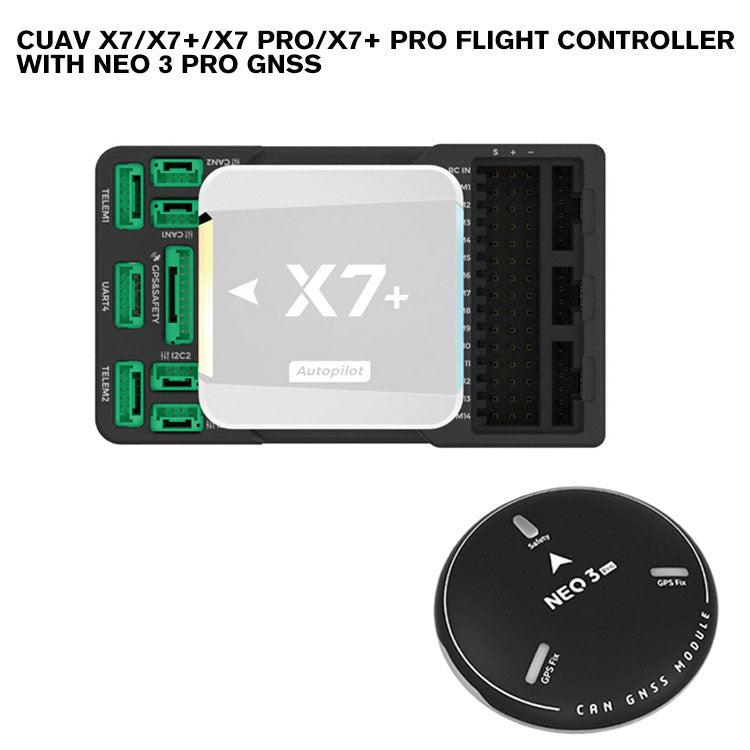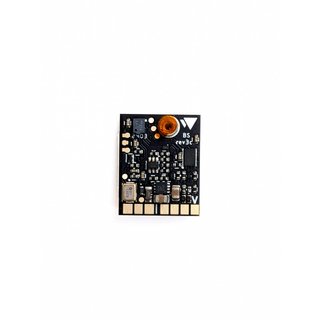SparkNavi Drone Flight Controller and GNSS/INS Made in Taiwan: Accuracy and Development
SparkNavi Drone Flight Controller and GNSS/INS Made in Taiwan: Accuracy and Development
Blog Article
Comprehending the Necessary Attributes and Functions of a Drone Trip Controller for Optimum Airborne Performance
The trip controller serves as the pivotal component in a drone's design, orchestrating its movements and guaranteeing stability via an advanced interaction of data and sensors processing. With innovations in technology, the landscape of flight controllers is quickly advancing, triggering a closer exam of what genuinely specifies optimum performance in this essential system.
Review of Trip Controllers
When discovering the globe of drone technology, comprehending flight controllers is necessary for both hobbyists and specialists alike. Trip controllers serve as the brain of the drone, coordinating its motions and making certain security throughout trip (SparkNavi drone flight controller and GNSS/INS made in taiwan). They refine information from different sensors, including barometers, gyroscopes, and accelerometers, to keep equilibrium and react to pilot inputs efficiently
The architecture of flight controllers can differ substantially, varying from standard versions made for entry-level drones to sophisticated systems equipped with advanced features for expert applications. The integration of GPS abilities allows exact navigating and positioning, while programmable firmware enables customers to customize flight features to match their specific requirements.
Moreover, trip controllers are crucial in promoting communication between the drone and the push-button control, enabling real-time adjustments and telemetry data transmission. Comprehending the different kinds of flight controllers, consisting of multi-rotor, fixed-wing, and crossbreed systems, is critical for selecting the proper version for a provided application. Eventually, a detailed understanding of flight controllers not just boosts the flying experience yet additionally makes best use of the performance and safety of drone operations.
Key Functions of Flight Controllers
Flight controllers play an essential duty in taking care of a drone's trip dynamics by performing numerous key features that make certain security and responsiveness. Among the primary features is the stablizing of the drone's positioning and elevation. This is achieved with the integration of different sensing units, consisting of measures, accelerometers, and gyroscopes, which continuously keep track of the drone's position and movement.
.png)
An additional necessary feature is the handling of control inputs from the pilot or self-governing systems. The trip controller interprets these inputs and adjusts the drone's motor speeds as necessary to accomplish the preferred flight course. This consists of handling yaw, pitch, and roll, which are vital for maneuverability.
Additionally, flight controllers are geared up with foolproof devices. These functions are developed to react to essential scenarios, such as low battery degrees or loss of signal, by starting predefined activities like returning to the launch factor or floating in position.

Necessary Functions to Consider
Many essential features ought to be considered when selecting a drone trip controller to make certain optimum efficiency and reliability. One vital element is the controller's handling power, which identifies its capacity to look at these guys manage complex flight formulas and real-time data handling. A higher handling capacity enhances responsiveness and stability throughout flight.
One more important feature is the variety of supported flight settings. A versatile trip controller should use various modes, including acro, elevation hold, and GPS-assisted settings, catering to different pilot skill levels and operational scenarios. Additionally, the existence of built-in safety and security functions, such as fail-safes and geofencing, can dramatically enhance operational security.
Compatibility with different communication methods is additionally vital, as it makes certain smooth combination with other gadgets and peripherals, such as remote controllers and telemetry systems. The controller's firmware have to be easy to use and on a regular basis updated to incorporate brand-new functions and optimizations.
Assimilation With Sensing Units and Equipments
A flight controller's efficiency is greatly affected by its capacity to integrate with various sensors and systems. This integration is crucial as it enables the trip controller to receive real-time information essential for effective flight monitoring. Key sensors include GPS, inertial measurement systems (IMUs), measures, and magnetometers, each providing essential details concerning the drone's alignment, setting, and elevation.

Furthermore, advanced trip controllers sustain combination with payload systems, consisting of cams and various other sensors, allowing enhanced functionalities such as independent navigation and challenge avoidance. This interconnectedness not just enhances the useful reference drone's operational abilities yet likewise expands its application prospective throughout different markets, from airborne digital photography to agricultural tracking. Thus, a well-integrated flight controller is basic for achieving optimum airborne efficiency and guaranteeing the reliability of drone procedures.
Tips for Optimizing Efficiency
To optimize the efficiency of your drone, several vital strategies can be utilized that focus on maximizing both software and hardware elements. Guarantee that the trip controller firmware is up to date. Producers frequently release updates that boost security, enhance functionality, and fix insects. Frequently looking for these updates can substantially impact your drone's efficiency.
Next, calibrate your sensing units, consisting of the accelerometer and gyroscope, to make sure exact analyses. Appropriate calibration lessens drift and improves flight stability, particularly during complicated maneuvers. Furthermore, think about updating the hardware components, such as electric motors and propellers, to boost thrust and effectiveness. Top quality propellers can lower drag and rise trip time.
Additionally, enhance your drone's weight by lessening unnecessary payloads. A lighter drone not just executes far better but also expands battery life. Lastly, fine-tune your flight settings, including PID (Proportional, Important, Acquired) worths, to accomplish smooth and receptive handling. By implementing these methods, drone operators can dramatically improve aerial performance, causing a much more effective and delightful flying experience.
Conclusion
Finally, a complete understanding of drone trip controllers is crucial for boosting aerial performance. The combination of vital functions and crucial attributes, including handling power and safety mechanisms, directly affects the security and maneuverability of drones. Additionally, effective interaction with numerous sensing units and systems plays an essential function in achieving accurate navigation and operational efficiency. By focusing on these elements, drivers can dramatically elevate the efficiency and reliability of their drone systems in varied applications.
Flight controllers offer as the mind of the drone, orchestrating its movements Source and ensuring stability throughout flight.Trip controllers play a critical function in taking care of a drone's trip dynamics by executing numerous essential features that ensure stability and responsiveness. The flight controller interprets these inputs and adjusts the drone's motor rates as necessary to accomplish the wanted trip course.Countless essential attributes need to be taken right into account when choosing a drone flight controller to make sure ideal performance and dependability. Therefore, a well-integrated flight controller is fundamental for attaining optimum aerial performance and making sure the dependability of drone operations.
Report this page